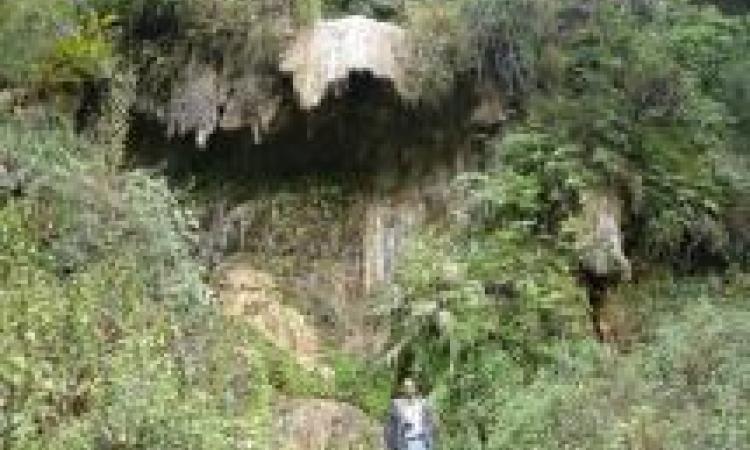
This presentation by ACWADAM deals with Karst hydrogeology, a term used to denote the topography over limestones, dolomites or gypsum rich rocks where there are sinkholes, caverns and lack of surface streams. Karst mainly refers to carbonate rocks: Limestones (CaCO3) or Dolomites (MgCa[CO]).
The formation of carbonate rocks can be traced to physical and chemical deposition. Physical deposition is clastic in nature formed by deposition of particles carried in suspension. It is marked by higher primary porosity and low secondary porosity. Chemical deposition is in the form of precipitate formed by deposition of particles from solution. Contrary to physical deposition it is marked by low primary porosity and high secondary porosity.
Karst aquifers form by flowing water of slightly acidic nature containing carbonic acid that dissolves carbonate rocks. The solubility of rock is more in case of limestone and less in dolomite. There is an increase in porosity and permeability with enlargement of fractures and bedding planes. The dissolving of rock matter follows pre-existing structure: bedding planes, fractures, their intersection and depends on:
- Rate of groundwater flow through rocks
- Degree of saturation of moving water
The presentation describes the characteristics of carbonate aquifers:
- Wide variety of hydrologic characters - underground rivers at places; homogenous unidirectional flow; intermediate types
- Discharge variance is high
The models of carbonate aquifers are described thereafter:
- Diffuse flow carbonate aquifers (clastic)
- Less solution activity
- Directed towards larger openings;
- Homogenous flow
- Free flow carbonate aquifers (solution)
- Diffused recharge
- Well developed solution channels
- No structural or stratigraphic control on movement of water
- Confined flow carbonate aquifers (clastic and solution)
- Solution channels in a few units
- Non-permeable units present
- Stratigraphic or structural control on flow
- Mountainous carbonate aquifers
- Water table can be deep in mountains
- Perched conditions are common in solution depressions at shallow levels
- Intersections of fracture zones and bedding planes commonly give rise to such conditions
- Bore-wells drilled in such intersections will receive water while nearby wells outside this zone may be dry
This presentation is part of the training modules on planning, development and management of groundwater with special reference to watershed management programmes by ACWADAM. Please write to ACWADAM at acwadam@vsnl.net for sourcing these presentations.
/articles/karst-hydrogeology-presentation-acwadam